

Prior Episodes | 7972 (5 BBY) | Next Episodes
Continuity & Analysis
Star Wars: Rebels - Spark of Rebellion (2014) [S1E1-2]
It is a dark time. The Jedi are no more, and the Empire rules the galaxy with an iron fist -
bringing tyranny to the Outer Rim world of Lothal. Their ominous presence is a cloud over
the planet, squashing any hope of freedom or a better life, especially for 14-year-old orphan
Ezra Bridger. But the young con artist soon finds that destiny has other plans for him, as he
encounters a small band of rebels who dare to strike back against the Empire.
Star Wars: Rebels - Droids in Distress (2014) [S1E3]
Low on food and fuel, the Ghost crew agrees to steal an Imperial weapons shipment for
crime lord Cikatro Vizago. During the mission, they encounter a familiar droid duo -
and find that the weapons in question are more deadly than they'd realized.
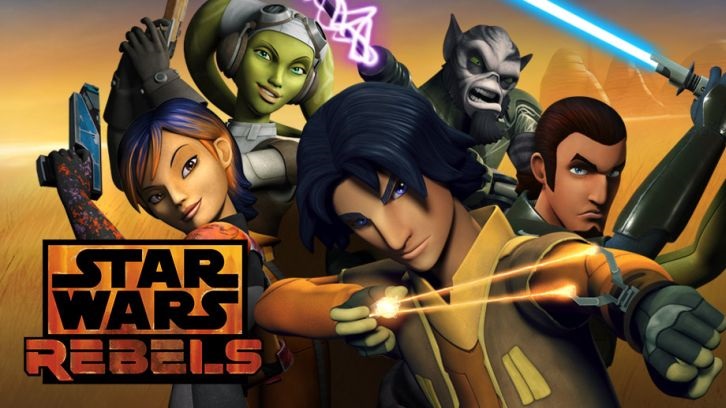

CONTINUITY
The series Rebels begins 5 years before Episode IV. Episodes take place in chronological order.
The planets Lothal, Kessel, and Garel are seen for the first time, and are the three worlds are seen in these episodes:
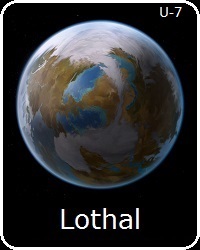
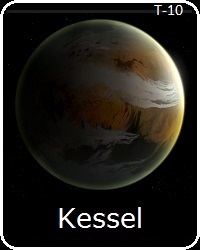

The two-part pilot episode, 'Spark of Rebellion', was preceded by four 'shorts' which briefly introduce the main
characters, entitled 'The Machine in the Ghost', 'Art Attack', 'Entanglement', and 'Property of Ezra Bridger'.
- The Ghost is a VCX-100 light freighter which has been modified for increased maneuverability and combat capabilities. Its transponder system
has been modified in a unique way which allows the ship to "scramble" its signature to avoid identification. The Phantom is the ship's
auxiliary starfighter, which is not capable of hyperdrive at this point. The VCX-100 is a product of the Corellian Engineering Corporation.
- Lothal is a terrestrial planet located in the Lothal Sector, a subdivision of the Dominus Sector in the Slice region of the Outer Rim, near to
the outer edge of the galaxy. The planet features an active water cycle with oceans, seas and lakes, large continents with rocky and
mountainous terrain, and huge regions of plains and steppe land. Lothal has a native ecosystem, and animal life includes unique
creatures such as loth-cats, loth-bats, loth-rats, and loth-wolves. The planet was colonized by races from the Core civilization during
some period of settlement and expansion sometime after the 40th century (4000 BBY), although evidence seems to suggest
it was probably much closer to the 70th century (1000 BBY). Lothal in the time of the Empire has a significant population and
a number of urban centers, including the capital Lothal City, Jalath, and Kothal. The planet is orbited by two moons.

- The Spectres, also known as Ghost Team, is a rebel do-gooder squad created by Hera Syndulla and her Jedi boyfriend Kanan Jarrus, operating
out of her starship the Ghost. Team members have codenames, Spectre-1 is Kanan, Spectre-2 is Hera, and Spectre-3 is C1-10P, Hera's
droid pal. The other Spectres all joined the team at different points in their history, and were given code names based on the order in
which they joined. Spectre-4 is Garazeb Orrelios, Spectre-5 is Sabine Wren, and Spectre-6 will be Ezra Bridger.
- Valen Rudor calls himself "an officer in the Imperial Navy." This clearly demonstrates that the Imperial Starfighter Corps is ultimately considered
to be a branch of the Navy. This is therefore also the status of the Imperial Naval Infantry, what Lucasfilm supplementary material usually
calls the 'Stormtrooper Corps', even though many Imperial Army units have troops which are referred to as stormtroopers. Both the Naval
Infantry and the Starfighter Corps wear blue-based insignia like the Imperial Navy, but like the U.S. Marine Corps and Air Force, use Army
rank titles rather than Naval ones. In the U.S., the Air Force was originally part of the Army, which is why it uses Army ranks, however
the Marine Corps was originally part of the Navy and also uses Army ranks. Both became separate branches due to their increasingly
prominent role in warfare. The military situation in the SW galaxy is a few dozen millennia past that development point, and armies are
now planet-bound military assets of secondary importance to the starfleet. This model requires the Naval Infantry and Starfighter Corps
to function seamlessly within the Navy while still maintaining enough self-sufficiency to operate without naval support alongside
the Army once deployed to a planet, or as part of a planet's aerospace defense structure.
Main Article: Ranks and Rank Insignia
- Many Force-sensitive people who are not trained by Force wielders manifest one or a few abilities with the Force one their own. In Ezra's
case, he has above average shooting accuracy, and a superhuman ability to avoid incoming objects and to jump great distances.
The degree to which he can do things that others cannot is not so pronounced that he thinks himself a freak, he simply describes
himself as "really good" at certain things. Some who have a natural aptitude with one aspect of the Force that has manifested as
an ability can in theory learn to access other aspects of the Force, if they become aware of it and teach themselves to focus on it.
Ezra uses his abilities regularly, however those who do not are unlikely to progress, and may even lose that ability over time.
Just before their first meeting, Ezra and Kanan both sort of notice each other through a feeling from the Force, despite not yet
knowing each other. Later, Ezra senses the kyber crystal in Kanan's holocron or lightsaber, or both, which leads him to go looking
for it on the ship. It seems that Ezra's use of the Force while just trying to survive has already made him strong enough with it to
begin to grow his abilities, and strong enough for Kanan to notice him. They are also connected through the Force, which is not
entirely bound by spacetime, and even though they haven't developed their connection yet, this may have been destined by the Force.
- Ezra's slingshot fires energy pellets, which are energy projectiles similar in strength to a stun blast from a blaster.
- The Grand Inquisitor is the leader of the Imperial Inquisition, an order of Sith Acolytes responsible for hunting survivors of the Great Jedi
Purge, as well as rounding up Force-sensitive children. Like some Inquisitors, the Grand Inquisitor is a former Jedi.
- Darth Vader tells the Grand Inquisitor, "the Jedi Knights are all but destroyed." According to George Lucas, perhaps over a hundred Jedi
survived Order 66, however some of those Jedi have been killed by the Empire or others between the prequels and these events.
Based on Lucas' treatments for the actual sequel trilogy, there are more than a couple Jedi from the days of the Republic still alive
in this time period other than Obi-Wan, Yoda, Caleb Dume, and Ahsoka, but not many. Vader also says, "the Emperor has foreseen
a new threat rising against him, 'the children of the Force', they must not become Jedi." The Inquisition's search for children is
the realization of an aspect of Sidious' plan which he started during Clone Wars, intending to both increase his power by utilizing
the abilities of others with the Force, while simultaneously filling the void left by the Jedi in the locating and identification of those
who are strong with the Force. These children are a potential risk to his plans, especially while there are still a few Jedi teachers
at large in the galaxy which could instruct them to a very advanced level and point them in his direction. Vader therefore orders,
"if they will not serve the Empire, eliminate them along with any surviving Jedi who will train them."
Main Article: Darth Sidious and The Plan
- The leader of the Imperial Army garrison in Lothal City is Major Cumberlayne Aresko, and his executive officer is Captain Miles Grint.
Aresko is later identified as Commandant of the Imperial Academy on Lothal, a title and position given to a Major. Since Grint is
his subordinate, and wears the same three-column, two-row 'block' insignia as Aresko, he must be a Captain, as any officer of
a lower rank would have a 'block' insignia with two-columns, such as Lieutenant Lyste, who is also seen operating with security
forces in the city. Lyste is later identified as the Supply Master for the Army in Lothal City. Grint is later identified as Taskmaster
at the Academy, as all three officers clearly have additional duties beyond serving as leaders of the local security force.
Main Article: Ranks and Rank Insignia
- All trade must be registered with the Empire. This is a feature of the middle and late stages of the Imperial economic program, which
includes heavy nationalization. The program of complete registration of all private economic activity is both an aid to the security
state, and a convenient registry of sources of independent wealth and livelihood which can be seized in the future.
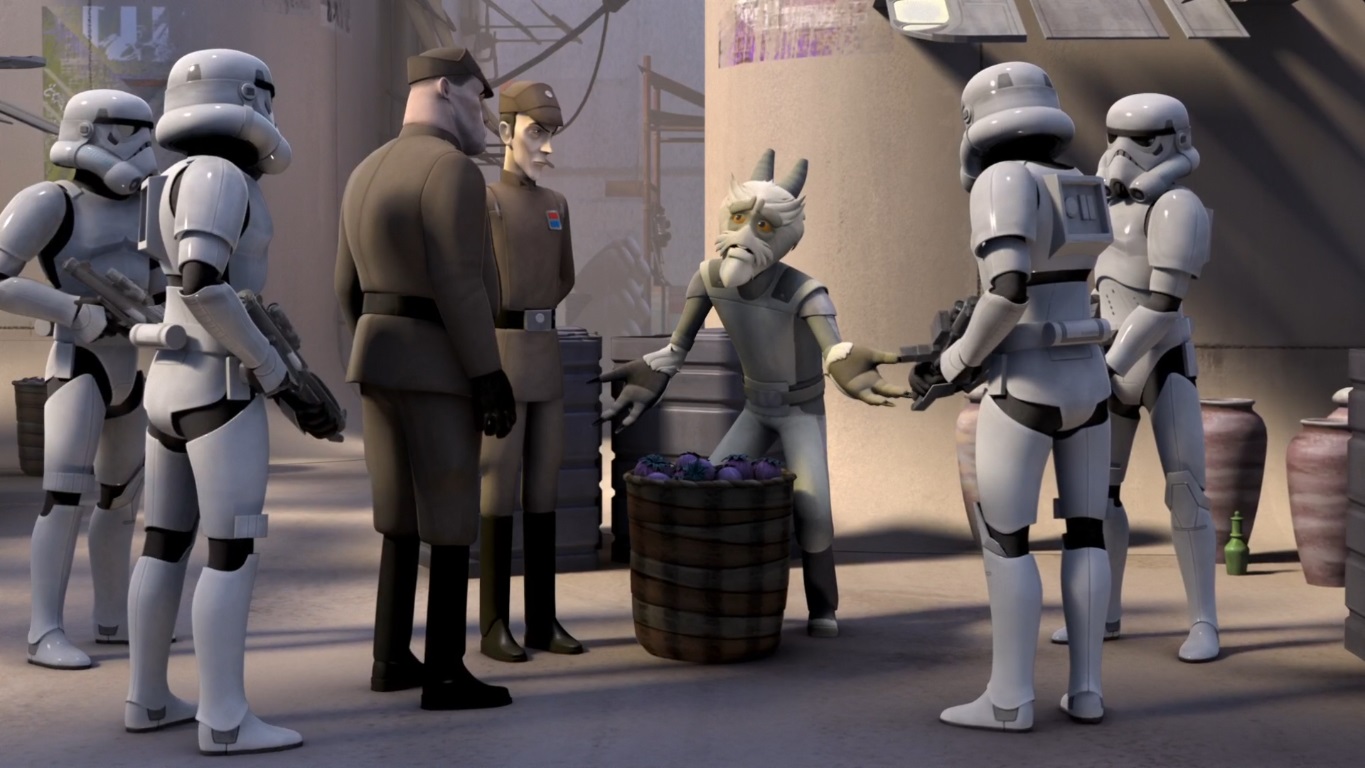
- Yoffar, the Gotal merchant the Empire is hassling, states, "I remember what it was like before your ships showed up, before you Imperials
ruined Lothal like the rest of the galaxy." Remembering that, or at least saying that outloud, is grounds for charging someone with
treason at this point in the Empire. Objecting to the existence of the state openly is considered a threat to the state. This shows not
only the level of fascism inherent in the political system, but also how tenuous Imperial rule still is, and how fearful its rulers are.
- There is a large mural advertisement on the side of a building on Lothal, which is encouraging skilled workers to seek a job at the local
Sienar Systems factories. It is written using the Aurebesh alphabet, but is shown in the image below using the Latin alphabet for
ease of comprehension. Military industry in the Empire developed the same cycle as in a corporate democracy: war is good for
industry, industry is good for jobs which people need, therefore many people support the war machine because it supports
industry and their job. The Empire nationalizes private enterprise, seizes agricultural land, and reduces the opportunities for
independent merchants, leaving other workers with no choice but to seek employment from the state, just as the state intended.
If there was a free and peaceful economy instead of a war economy, industry and jobs would still exist, but once the war industry
cycle has taken over, workers must participate in it to make ends meet, which in turn creates generational loyalty to the war
machine in some workers. This is precisely what Fascist and Imperialist leaders desire and seek to impose on their societies.
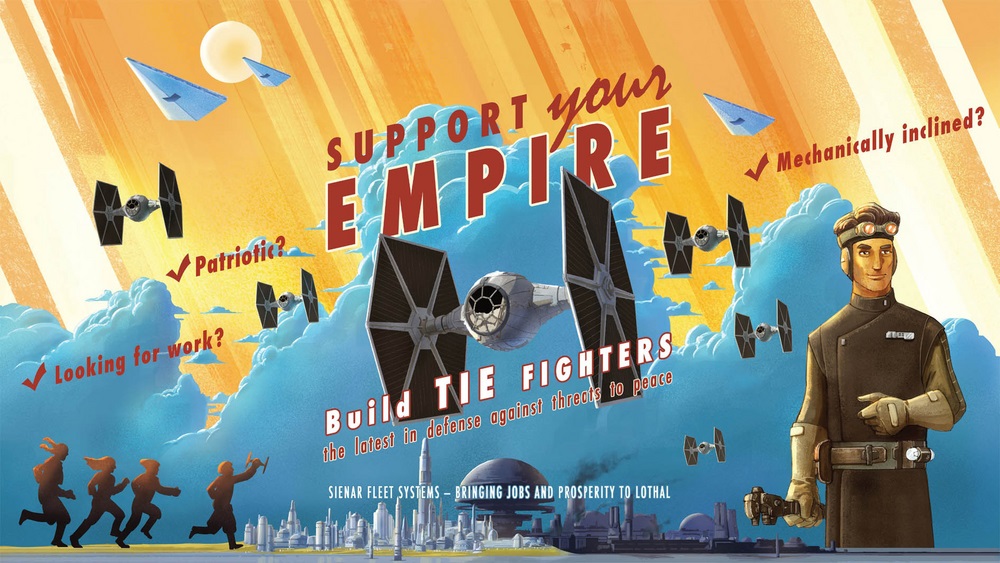
- The implication seems to be that Ezra has never before been in space. Despite the great many people who use spacetravel, have used
spacetravel, or whose circumstances in life have them operating in space, there are no doubt huge numbers of people across
the galaxy who come from planets with spaceships and spaceports who have never been able to afford spacetravel or never
had a reason to leave the planet they live on. It is very likely that the majority of people in the galaxy are planet-bound.
- Lothal City, usually referred to by locals as Capital City, is the administrative center of Lothal, and is probably its largest city. At this
point in history, its skyline is dominated by the Imperial Complex, which is both a military base and the headquarters for
the military government of the planet and the sector it presides over. Also referred to as the 'Dome', it is a prefabricated
facility which was landed by the Empire on the planet by means of huge thrusters at its base. It can therefore be relocated
or even withdrawn if so desired. Supplementary material calls these 'Imperial Planetary Occupation Facilities'. Lothal City
is situated on the shores of one of Lothal's small oceans or large seas, in a region with rolling terrain meets a large grassland.
The city hosts a diverse colonial civilization of Humans and other interstellar species, and is home to the planet's main spaceport.
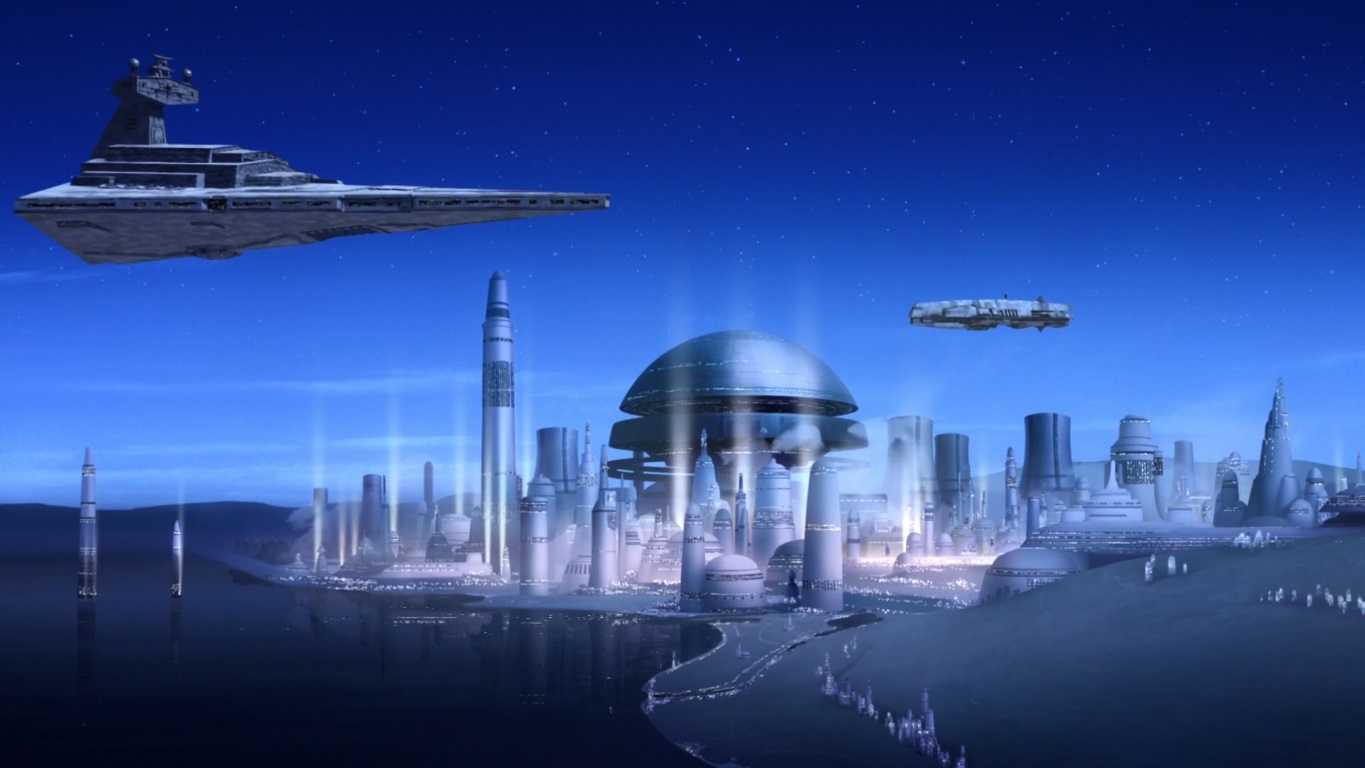
- Agent Alexsandr Kallus is an operative of the Imperial Security Bureau, a paramilitary state police force which was not part of canon prior
to this episode. His insignia gives his position in the rank structure as approximately the rank of Line Captain in the Imperial Navy,
or the equivalent rank of Staff Captain in the Naval Infantry or Starfighter Corps, however it has one of its blue pips augmented grey.
This was the first instance of a 'bar'-style rank insignia with three colors, as well as the first appearance of a grey tile in an Imperial
insignia. It seems to be an indication of a unique insignia for a given ISB position and department. His regular insignia is used
alongside another on the neck of Kallus' field uniform, which is a unique ISB rank insignia indicating his current rank of
Staff Captain within the organization. When he is later promoted, this insignia is also seen to be adjusted accordingly.
At this point, Kallus' position is Agent in the ISB, which he is properly addressed as rather than his rank of Captain.
Main Article: Ranks and Rank Insignia
- The Imperial Security Bureau is a military police which is also something of military intelligence bureau, and like many similar forces
in Earth history, draws officers from the ranks of the regular branches of the military. Their officers are therefore members of
the Navy and the Army, as well as those who have made a career exclusively in law enforcement. ISB officers wear distinctive
white dress uniforms, and while they are not the only Imperial officers to wear white colored dress uniforms, these are most
commonly associated with the ISB. Agent Kallus and other officers wearing field uniforms are seen to wear black or grey.
The ISB is an independent organization seperate from the military which reports directly to the Emperor and the Imperial
Council. Its mandate is state security, which in view of the Empire's military government makes them the Empire's federal police.
- The Ghost was named by Hera for its ability to evade detection or identification. It is stated that the ship can "scramble its
signature", likely a reference to the unique energy and engine signature given off by a ship, as well as the signal given off
by its communication system and transponder. According to supplementary material, this is achieved by "baffling"
the engine, installing energy dampers, and jammers, as well as other illegal upgrades made to the ship.
- Grand Moff Tarkin is the Governor of the Outer Rim. Moff is an Imperial title for the military governor of a sector. Tarkin was first
promoted from the admiralty of the Navy to the rank of Moff immediately after the Empire was declared 14 years earlier,
in 7958 (19 BBY), and was seen to hold that rank in the closing montage of Episode III. At some point between then and
this episode, set in 7972 (5 BBY), he was promoted to Grand Moff, a rank given to the military governor of an entire
galactic region, in his case the Outer Rim. Moff is an ancient regal title used by despots ruling over client states to the Old
Republic in millennia gone by when central authority had waned, and is now used by the Empire to denote semi-nobility.
Main Article: Ranks and Rank Insignia
- Ezra doesn't recognize a lightsaber even after activating one, but when told it is one, asks "isn't that the weapon of the Jedi?"
While Ezra has heard of the Jedi and lightsabers, he doesn't know first hand what they look like, and he also asks Kanan,
"what's the Force?", showing that he has never been filled in by a teacher or even heard all about the Jedi from stories
people might tell. The fact that he has not been exposed to any local religion about the Force or run into any people with
a strong faith in the Force shows that while this is still common in places even under Imperial repression, many people
simply don't know very much about the Jedi, and while they are still very famous, they are also something of a legend.
Main Article: Awareness of the Jedi and the Sith
- The Empire is regularly collecting shipments of Wookiee prisoners to be used as forced labor. Hera states that, "most of these
Wookiees were soldiers for the old Republic." Things have not gone well for Wookiees in general during the reign of
the Empire, but those who actively fought alongside the Republic are considered to be allies of the Jedi and are in
the most danger. As seen, those wanted for capture include their families, and those who have since resisted the Empire.
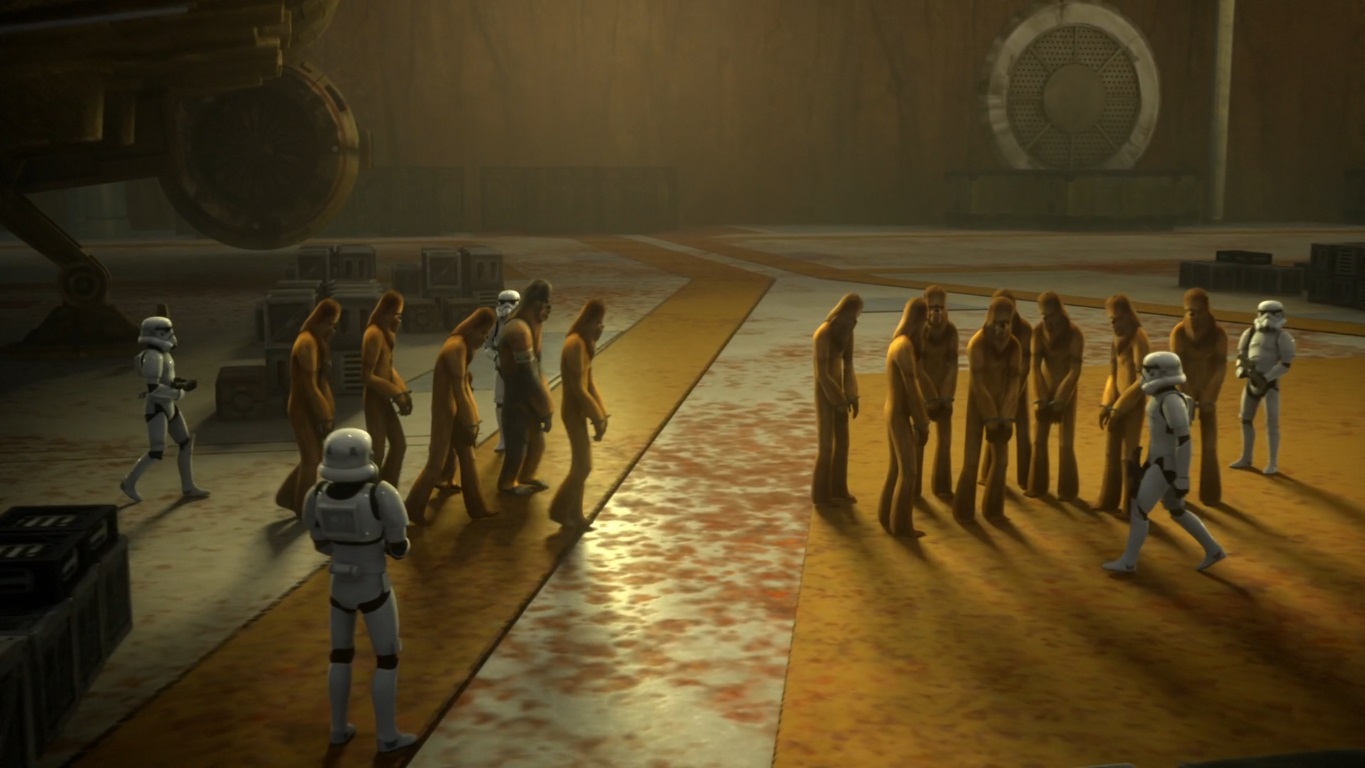
- Jamming signals are known to prevent sensor readings and hyperspace communications. It is demonstrated here that even short
range transmissions are interrupted by jamming. This suggests that all messages, both interstellar and within a starsystem,
are transmitted using the same methods and equipment. Technically speaking, all transmissions are hyperspace transmissions.
Main Article: Hyperspace Communication
- The Imperial transport has a central gravity generator, which can be used to control the entire artificial gravity system. It is seen in
other material that artificial gravity still works even when a ship is completely disabled and powered down, suggesting that
individual emitters for artificial gravity which are underneath deck plating have internal batteries and can function without
central power. It has also been shown that the primary controls for a ship or even a compartment can control these gravity-
generating emitters, suggesting that this same 'gravity generator' mentioned here is being accessed when this is shown.
- Tractor beams can be jammed using some sort of interference which prevents them from locking on. The unusual amount of jamming
equipment on the Ghost may make this more effective. Jamming signals are not usually omnidirectional, as that requires a great
deal of power. They are most effective when trained on the source they are trying to jam, just as with jamming communications.
To successfully jam, the energy output must be sufficient to disrupt the opposing beam, and thus it is unlikely most small ships
can effectively jam the tractor beams of a ship like an Imperial destroyer, however as seen with the Ghost this is not always the case.
- Obi-Wan's recorded message on the holocron, says, "This is Master Obi-Wan Kenobi. I regret to report that both our Jedi Order and
the Republic have fallen, with the dark shadow of the Empire rising to take their place. This message is a warning and a reminder
for any surviving Jedi. Trust in the Force. Do not return to the Temple. That time has passed, and our future is uncertain. We will
each be challenged. Our trust, our faith, our friendships. But we must persevere. And in time, a new hope will emerge.
May the Force be with you, always." It does seem to be the "recalibration" message that Obi-Wan recorded in Episode III
which was not shown at the time, based on its warning not to return to the Temple.
- Kessel is an infamous planet located in the Kessel Sector, in the Slice region of the Outer Rim, near the eastern edge of the galaxy, within
a treacherous region of space known as the Akkadese Maelstrom. The only charted hyperspace route leading to and from the planet
is the Kessel Run, the other end of which is the Pyke homeworld of Oba Diah. Kessel is a rocky world with an active water cycle and
a native ecosystem which includes complex plants like trees. Verdant regions are primarily concentrated in the southern hemisphere,
as the northern hemisphere is largely a barren, desolate landscape. Kessel has a wealth of mineral resources, and is a significant
source of hyperfuel and spice, a narcotic substance used to make drugs and medicines. The planet was colonized by Pykes and other
races due to its wealth of resources, and throughout history great numbers of slaves, forced laborers, and indentured servants
were brought to the planet to extract resources. The spice mines on the planet are famously harsh and lethal to workers, and are
the primary source of Kessel's enormous wealth. As seen in The Clone Wars 'Deal or No Deal' (S7E6), Kessel is ruled over by
a royal family which controls resource extraction on the planet. Kessel was the first planet mentioned in SW dialogue, near
the beginning of Episode IV, and yet was not seen in screen until its first canon appearance in this episode. The planet
has since appeared in material produced after this episode which is set earlier in time.


Why is the Empire operating the spice mine on Kessel? It isn't definitively established that they are, only that they are
dropping off Wookiee prisoners for forced labor. It could be that the Empire sells big, strong prisoners like Wookiees to
the Pyke Syndicate knowing they will be worked to death. It is later seen in Solo that the Empire certainly protects
the supply of spice and fuel which comes from Kessel, so it isn't as if the Empire has any issue with these criminals or their
operation. The question is more the degree of integration, and exactly how that would work. It seems likely the Empire
was just dropping them off, and that this choice by the creators was probably inspired by a desire to retroactively
explain why C-3PO would think they would be sent here if captured by the Empire at the start of Episode IV.
- Kallus identifies Kanan as a Jedi despite this being his first encounter with one because of his use of a lightsaber, and because Kanan was
not afraid to stand in front of a squad of troopers with blasters. As an ISB agent, Kallus would absolutely be aware that the Jedi exist
and that if one is found they should be captured or defeated. Nevertheless, the Jedi, their weapons, and their incredible abilities are
still widely known 14 years after their exile from public life. One of Kallus' troopers seems less surprised that a Jedi can single-handedly
defeat their squad, and his statement "first Jedi you've ever seen, sir?" seems to imply he has actually run into one before.
Main Article: Awareness of the Jedi and the Sith
- In a moment of anger and frustration, Kallus murders one of his own soldiers for being impertinent by kicking him and sending him plummeting
to his death. Kallus' storyarc is one of redemption, however most of his other despicable actions seen or discussed were carried out as
part of doing his duty and serving the order he believed in. This example, intended to establish that Kallus is deadly and uncompromising,
is somewhat out of character with later events which show that Kallus thinks of himself and the Empire as largely civilized and honorable.
- The freed Wookiees are picked up from the Ghost by an Auzituck-class gunship, the first example of a Wookiee-produced starship
shown, and the only example of a spaceworthy craft produced by Wookiees other than the pod ship given to Yoda in Episode III.
Kashyyyk is not an industrialized planet, however Wookiee's are very intelligent and technically proficient, and are fully capable of
building ships, however they do not mass produce them, and they have no intention of selling them as a retail product.
- C-3PO and R2-D2 were last seen 10 years earlier in Droids 'The Frozen Citadel' (E13). Different supplementary and non-canon material
has various tales of their journeys and exploits in the interim, and at some point the two they did eventually return to Alderaan, as they are
seen to be working for Captain Antilies, with R2 having been sent on a sabotage mission by Senator Organa. At some point since they were
last seen, C-3PO lost the lower part of one of his legs, and now has one mismatched silver lower leg.
- Minister Maketh Tua is the highest ranking member of the Lothal government after Moff Pryce, who is the sector's Governor. As Pryce is
absent at this point in the narrative, she is seen to be in command on Lothal. There may be other ministers in Governor Pryce's
administration, however none are seen in this series. Her role may that of a First Minister, although she is not addressed with that title.
- Droids have to ride in the back of the shuttle bus, since they are second-class citizens in the Empire. While this may have been the rule some
places in the Republic era, this is definitely part of the Human-centric Imperial policies and the general increase in popular resentment for
droids in the decade after the Clone Wars. As seen in Droids 'Escape Into Terror' (E2), there are usually separate waiting lines
and similar social separations between organic beings and droids, which C-3PO considers to be discrimination.
- Garel is a rocky planet located in the Lothal Sector, within the Dominus Sector in the Slice region of the Outer Rim, relatively near to Lothal.
The planet is relatively dry, but features an active water cycle producing rain and groundwater, as well as an agreeable climate. Garel
was colonized along with the rest of the region sometime between the 40th and 70th centuries (4000 to 1000 BBY), and developed
primarily as a shipping center and transit hub. Garel in the time of the Empire has a significant population and many large urban
centers, primarily concentrated in the planet's tropical regions around its equator. Major cities were built in craters and other geological
depressions, with their sprawling urban conglomerations fanning out from them in the usual circle and grid pattern typical in
Republic history of colonization and redevelopment. The capital, Garel City, hosts the planet's largest passenger spaceport.

- T-7 ion disruptors are powerful energy rifles which "can short-circuit an entire ship", and can be used against infantry to great effect. Their
devastating ionic effect against equipment is lethal to organic beings in a horrific way, leading to their being banned by the Senate.

Why does Kanan let Vizago take half of the shipment without paying them for it? Obviously, they have more important
things to deal with at the moment, and aren't really in a position to argue. Vizago was already going to make a huge
profit selling them, and can easily afford to pay the Spectres half of the agreed rate at some later point. It is not at all
out of character for Vizago to do such a thing, but it is surprising the Spectres don't seem too concerned that they just
gave horrible weapons to an arms dealer for no pay, as pay was why they felt they had to do this in the first place.
- Senator Bail Organa of Alderaan was last seen 8 or so years earlier, in Tales of the Jedi S1E6. He is likely still Alderaan's representative in
the Imperial Senate, to be replaced sometime soon by Leia. He is also still running his underground network of republican partisans
and intelligence agents, first mentioned in deleted scenes from Episode III. With R2 as his spy, he has now learned there is a small cell
of Rebels operating in the Lothal Sector who undertake daring missions, and that there is a Jedi among them.
ANALYSIS
The hunt for survivors of Order 66 has lasted 14 years, and has been so successful in eliminating unaccounted for Jedi that the Emperor is now
primarily concerned about the threat posed by Force-sensitive children. He has been given visions of this threat by the Force, and rightly so, as
Force-sensitive children like Ezra and Luke will shortly become a serious problem for him. The fact that a number of Jedi, including some who are
quite powerful, are known to be at large or at least unaccounted for, has become a secondary issue for two reasons. The first is that the majority of
the one hundred or more survivors have been eliminated or otherwise accounted for, making knowledgeable Jedi teachers increasingly hard to find.
The second is Sidious' reliance on his prophetic vision from the Force, and his fixation on what it shows him. Since the possibility of threat by Jedi
of old has ceased to figure prominently in his visions, and the threat of "the children of the Force" has begun to loom, he now redirects his Imperial
Inquisition to focus their efforts in this area. The purpose of the Inquisition is to replace the Jedi Order as enforcers of the dominant religion and
the agency tasked with handling Force-sensitive individuals. Sith Acolytes were historically employed in large numbers, a policy which brought
great power but also endless threat of rising subordinates. In the last millennia, under Darth Bane's doctrine known as the 'Rule of Two', the Sith
have employed a minimum number of Acolytes at a time, such as during the Clone Wars, and eventually discard or eliminate them when they have
served their purposes. This is also the fate of the Inquisition, however their immediate usefulness as a police force capable of dealing with a Jedi
made them an important bulwark against the remote possibility of some coordinated Jedi effort against Sidious. It also allowed the utilization of
Force wielders willing to join the dark side, as the potential gains largely outweigh the risks provided these students are denied the really advanced
teachings of the Sith. The Jedi sought to prevent undisciplined children from learning to use the Force on their own, which would lead many to
wind up using the dark side, so they sought to collect or at least keep track of these individuals. They also limited the knowledge they passed down
to students until they were deemed ready to handle that knowledge. The Sith use the Inquisition in the same way, to prevent Force-sensitive children
from becoming unsupervised Jedi, and as a means to organize lower ranking members who are not yet privy to secrets of the masters. Unlike the Jedi,
the Sith Lords have no intention of ever allowing the Inquisitors or anyone else to learn their knowledge, no matter how ready they might become.
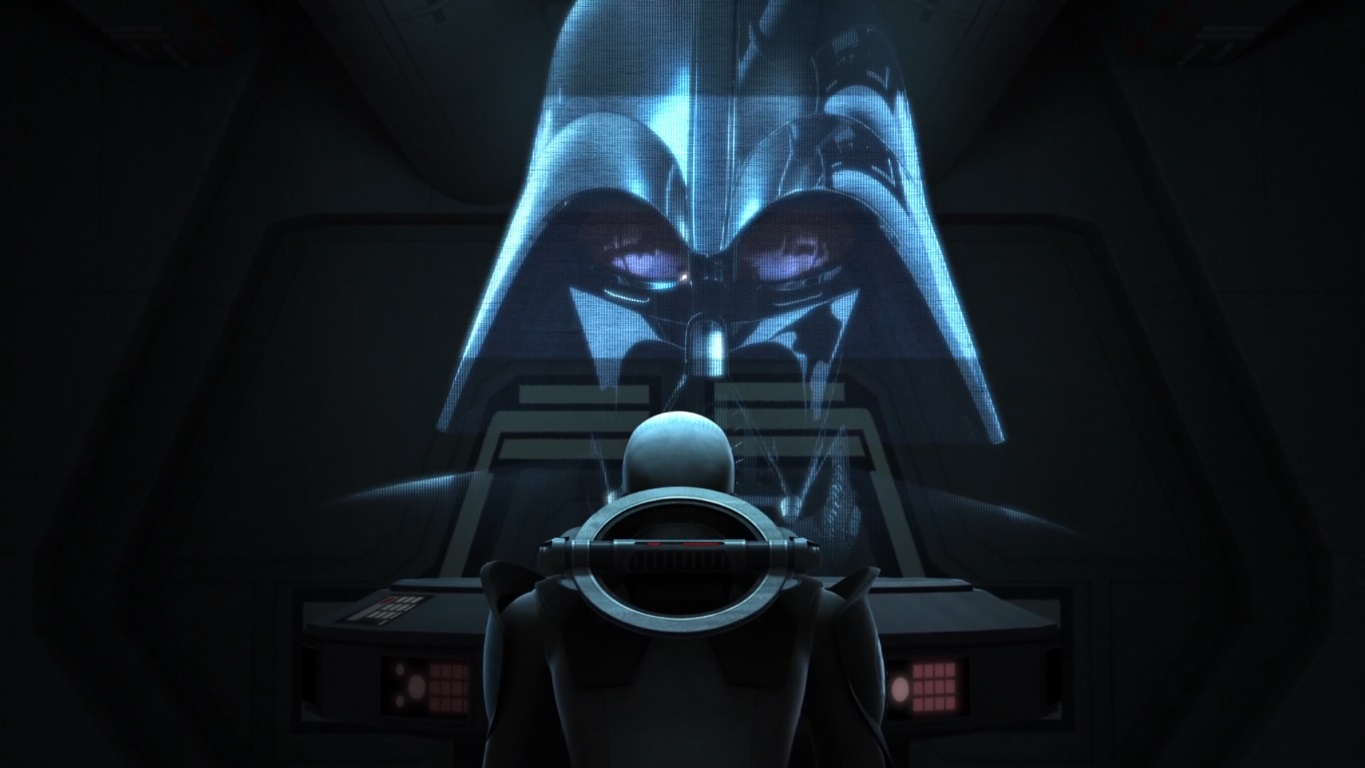
The Imperial era began with a great reorganization, which after a few years gave way to regular patterns of expansion of operations followed by
periods of consolidation. This pattern generally proceeded outwards from regions nearer to the Core to the Rim regions, although it was never
uniform in direction. Some areas of the Rim were heavily Imperialized right from the start, including populous systems along the major hyperspace
routes and in former Separatist heartlands. Regions of the Rim considered more rural or unimportant, particularly those in space once dominated
by the Separatist Alliance such as Lothal, were among the last priorities of the Empire in terms of resources. This does not mean the Empire didn't
claim jurisdiction over or exert authority on every planet whose society was once a colony of the Core civilization, as indeed all former Republic,
Separatist, and Neutral worlds have been declared to be within its jurisdiction. This means that planets like Lothal at first saw only minor changes
to life, and superficial changes to the government structure, a policy which allowed the Empire to keep tabs on a planet without having to devote huge
resources to every world and every region when its total resource capacity was limited. Each passing year of the Empire brought it greater resources
and greater consolidation of power, allowing its program to be replicated on secondary and tertiary projects, such as the Imperialization of planets
like Lothal. One merchant observes how much has changed in the last few years on the planet, remarking "I remember what it was like before your
ships showed up, before you Imperials ruined Lothal like the rest of the galaxy." This accelerating program is also bringing the nationalization of
production and trade, which has gripped the Core under the Empire's steadily unfolding fascist economy. This program not only controls industry
and its profits, but also seizes valuable land, leaving the former occupants poor and helpless while helping to identify those who would stand up to
this. This leaves this hungry, disenfranchised work force little option but to seek employment in the Imperial factories or Imperial military.

The establishment and expansion of the Empire involved a great deal of military force, as the Empire's vision of peace and security was even more
unpalatable to independent-minded worlds than that of the Republic. One of the more brilliant facets to Sidious' plan for the Clone Wars was that
the means he used to seize political power and deal with the Jedi would simultaneously cause the greatest opponents to empire to form into a single
organization destined to be destroyed by the war. The Separatists assembled every planet, organization, and faction which was so rebellious or
independent that they would readily stand up and fight against centralized government when the diplomatic Jedi were still in charge. These forces
would have been the first to resist the Empire, along with the Jedi, and thus the Empire is only declared when they have all been eliminated,
devastated, or otherwise neutralized. While the new Imperial security state instantly inflamed such sentiments of resistance to the state, the state
of the galaxy after the Clone Wars was one of economic depression, infrastructure damage, and war-weariness. There was little chance of these
elements posing any significant threat. Other than Separatist holdouts, the majority of the Empire's many campaigns in the first decade of its rule
were aimed at traditionally independent planets, and the homeworlds of races which were not historically colony worlds with Humans and other
interstellar species present to assert Imperial government. This included a great many worlds which chose neutrality in the Clone Wars, as well as
remote planets which were never directly administered by the Republic. Planets like Lasan fell into multiple of these categories, as they were
traditionally independent and self-sufficient, essentially was the homeworld of the Lasats, and was a remote system which was never previously
colonized or forced by the Republic to participate in interstellar affairs. The genocide of the Lasats was so complete that Minister Tua "didn't think
there were any Lasats left." Their resistance was so great the Empire felt they had to clear the planet to secure control. This kind of predatory
invasion wasn't strictly illegal, nevertheless the brutality of it led to the Senate banning the weapons used to commit these atrocities. While this
move does little to curb Imperial ambitions, it underscores that military actions at this stage are still subject to some scrutiny by the Senate and
the court of public opinion, and that the Empire is still to some degree required to maintain the pretense of being a benevolent, civilizing force.

Senator Organa and his allies have been running an underground network of republican partisans and intelligence agents since the weeks leading
to the declaration of the Empire 14 years earlier. Many of the small republican forces throughout the galaxy are aimed at the Empire, while others
are opposing criminal empires, megacorporations, and the other petty tyrants the Empire passively encouraged during its rule. All of these disparate
groups have two things in common, a desire to return to democratic rule galaxy-wide, and to end tyranny and re-establish republics on their various
worlds. Individually they pose little threat to the Empire, but together they represent the seeds of a coordinated rebellion which is finally beginning
to coalesce. This is due to two major factors, the first being the incrementally increasing tyranny of the Empire, the second being that a generation
has passed since the Clone Wars, and as so often happens in history the mood in the galaxy has shifted with time from war-weariness to discontent.
While the importance of potential rebel fighters is significant, far more important is the work Organa and his allies have done to coordinate, collect,
and utilize intelligence gathering and occasional small-scale sabotage. Knowing the enemy is far more important at this stage than any other aspect
of planning for resistance, and discovering the true intentions of imperials, rebels, and others before the lines are officially drawn is a far better
indication of their character. Working from within the Empire, Organa, his agents, and his droids can do far more to help the cause than they could
by acting impatiently and trying to stand up to the Empire openly in a futile display of principles.

FURTHER ANALYSIS
Report Pending